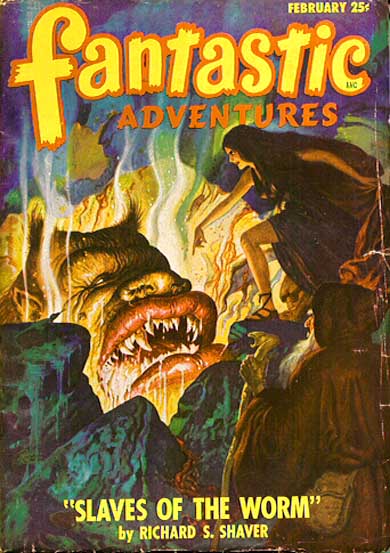When I initially thought about turning this into a series of posts, I thought I would save this one until the end. Now I've decided that I'm not going to get anywhere unless I talk about the most obvious example of lost worlds in a D&D context: dungeons.
There are a few published examples of this idea, notably B4: the Lost City and Caverns of Thracia. These modules take place in dungeons that are the ruins of some lost civilization, and the inhabitants of these ruins still retain a degenerate version of that civilization's culture.* On the surface it might appear as though this describes most dungeons; however, it is easy to think of counter examples such as T1: the Village of Hommlet or the B2: the Keep on the Borderlands.
So what makes one dungeon a lost world dungeon and another one just a "regular" dungeon? This might seem like a simple question, but it's worth thinking about. The most obvious answer lies in the explanation for the dungeon itself. The Lost City once belonged to a culture unknown to the broader world, and outsiders have not set foot in it for quite some time. The moathouse is simply a... well... moathouse that some bandits/cultists have decided to use as a base of operations. While not a shabby setup, the moathouse lacks the exotic mystery of the Lost City.** They're essentially in two different genres.
But that's not all that makes a Lost World dungeon, or at least it shouldn't be. Part of what makes these settings so fascinating is that they contain wonders that are hidden away from the larger world. This can be difficult to convey in a magical milieu such as the one that is the default assumption of the D&D rules, but it is not impossible. The easiest way to do it, to my mind, is to fill your dungeon with new or extremely underused monsters. If your lost world just has the same old orcs the surface world does, it doesn't feel very "lost." Grimlock/morlock cultists who sacrifice captured surface-dwellers to their albino dinosaur-god are better.
Try to think about what the original civilization/world was like and how being isolated in the subterranean depths has changed it. I like to imagine what horrors would "evolve" down there and how the new environment might affect the more humanoid inhabitants, if any. What do the people eat? Do they have any domesticates they created since being cut off? What nameless things stalk the less patrolled parts of their domain? Now, I'm not arguing for a fully fleshed out ecology, but I cannot deny that thinking about these sorts of questions can spark ones imagination. A good rule of thumb is that the more fucked up the answer is the better it will be at contrasting with the surface world the PCs are used to.
As far as I'm concerned, I can think of no better premise for a megadungeon. It'd be easy to have different factions, such as the cults found in B4, and if the alien wonders of such a setting can't excite your players then you should probably find new ones. However, I would caution against a more "underdark" style setup in which the cavernous world spreads across the entire planet. For one thing, this makes the area the players are exploring a little less unique, and the underground monsters just become part of an equally large ecosystem. It turns a place of nightmare into just another environment like a jungle or desert.
This isn't to say that all such dungeons have to be the size of the Lost City. In fact, I find the size of that module a little constraining. Where are my lost seas and subterranean suns? Instead, you should make sure that your lost world dungeon is closed off from the influences of both the surface and other, hypothetical lost worlds. This allows you to make it unique without having to explain how that interacts with something else.
One final bit of advice, and one I find much less necessary than the above bits, is to make the surface world either a fantasy version of historical Earth or an analog thereof. Now, don't make the surface world "mundane" unless you plan on setting every single session in the lost world,*** but having something that looks a bit more familiar to the players as the baseline allows them to contextualize the weirdness a bit better. One way to do it might be to have the surface world resemble a kind of medieval romance. Surface adventures have dragons and maidens and black knights and haunted castles. The instant you go into the underworld, things get really weird as you run into the remnants of Earth's terrifyingly advanced past. That's what I was going to (will?) do with the Hell-Caverns.
Anyway, I'll leave you with this only barely related Hawkwind song. Hopefully there will be more to come soon.
*At least they do in B4, which is the one I have the most familiarity with.
**This is not meant to denigrate T1. It's worth noting that I've run the Village about four times and have never actually run B4.
***Hopefully more on that later.


+ 1 for albino dinosaur gods!
ReplyDelete